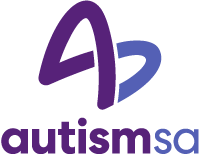Autism First Signs: A Checklist For Boys

It is generally accepted that the rate at which boys in Australia are diagnosed with autism is higher than in girls. There is thought to be a 4-3:1 ratio of males diagnosed as being on the spectrum compared to females, although most researchers also accept that this is not like to be a true reflection of the prevalence of autism in the country.
Why are more boys than girls diagnosed with autism?
There are no conclusive or universally accepted reasons as to why boys are more frequently diagnosed as being on the spectrum, although this has increasingly been an area of interest for researchers in recent times.
Some of the reasons that have been suggested for this disparity include:
- A longstanding perception that autism is a ‘male condition,’ along with the fact that historically there has been a higher prevalence of autistic males represented in the media than females
- Tools used to support a diagnosis may be biased towards identifying the characteristics of autism that are more commonly displayed by boys
- Boys with characteristics of autism are more readily identified by parents, carers, teachers or health professionals
- Boys are likely to be diagnosed much earlier than girls, even when their severity levels are similar
- Boys may less frequently use masking or camouflaging than girls.
There are no conclusive or universally accepted reasons as to why boys are more frequently diagnosed as being on the spectrum.
Signs of autism in boys
It is becoming recognised that there may be a difference in the way that characteristics of autism present in girls and boys, with a possible result being that boys tend to be diagnosed at an earlier age.
While everyone’s experiences of autism are different, there are nevertheless characteristics that boys on the spectrum are likely to display in two domains:
- Social communication and social interaction
- Repetitive or restricted behaviour, interests or activities
The checklist below is a guide and it is not expected that any individual would display all of these characteristics.
Please also note that the information below is simply a list of some of the common signs and characteristics of autism, and is not intended to be comprehensive or definitive. It is also important to keep in mind that what follows is a brief summary, and that only trained, accredited specialists can make a diagnosis of autism.
If a boy is displaying a number of these characteristics, it is advised to consult with a qualified healthcare professional.
Social communication and social interaction
Some of the characteristics that boys with an autism diagnosis commonly report in relation to social communication and social interaction include:
- Showing a tendency to have trouble taking turns in conversations, or trying to dominate when talking or playing with others
- An intense conversational focus on topics that are of interest to them, but a reluctance to talk about subjects in which they’re not interested
- Using a monotone or unusual rhythms when speaking, or very formal or informal language
- Some boys on the spectrum may develop only limited speech
- Difficulty in picking up on the tone of voice used by others, or their use of non-literal language (e.g., sarcasm, common figures of speech, etc.), and so not understanding a speaker’s intention or mood
- Making or maintaining eye contact can be difficult
- Difficulties in responding to others’ non-verbal cues, such as body language and facial expressions. A boy on the spectrum may also make facial expressions that are unexpected
- Difficulty in following instructions that contain more than one or two steps
- Inflexibility when it comes to setting and following rules, at school, at home or when playing
- Difficulties in answering questions or talking about themselves, or responding consistently to their name. Some boys on the spectrum may refer to themselves as ‘you’ rather than ‘I’
- Initiating conversations with other children can be difficult, as can developing or maintaining friendships
- Difficulty in expressing their wants or needs
- A preference for spending time with adults or younger children, rather than others of the same age
- A preference for playing alone rather than with others, or avoiding group activities
- Difficulties in recognising and respecting others’ personal space.
Repetitive or restricted behaviour, interests or activities
Some of the characteristics that boys with an autism diagnosis commonly report in relation to repetitive or restricted behaviour, interests or activities include:
- An intense Interest in unusual hobbies, some of which may not be viewed as age appropriate
- An intense interest in particular toys or objects, sometimes at the exclusion of all others
- Repetitive behaviours, such as always arranging objects in a particular and precise way, closing all the doors in the house, etc.
- Constant repetition of words or phrases
- Making unusual noises, likes squeals and grunts, or constant throat clearing
- Strong or extreme reactions to some sensory experiences, like sound, taste and smell, or no reaction to other inputs like pain, heat or cold
- Only wanting to eat certain foods based on their texture, or refusing to eat particular foods
- Adhering to routines closely and becoming upset when they aren’t followed or get altered
- Difficulty in adapting to new or unfamiliar social settings and situations
- Difficulty in transferring learned skills from one context or scenario to another
- Regularly refusing to go to child care or school, or becoming very distressed when made to go
- Unusual or repetitive body movements, such as clapping, flapping hands, rocking, spinning in a circle, biting or finger flicking, etc.
- Constant fidgeting and difficulties in sitting or standing still (taking into account developmental age)
- Irregular sleeping patterns, such as staying awake late into the night, or frequent waking during the night, often at the same time
- Regular feelings of anxiety, particularly in teenage boys.
Should I get an autism assessment?
If your son or a child in your care is exhibiting some of the characteristics associated with being on the spectrum, it may be helpful both in the short and long term to seek professional advice as early as possible.
Although this may prompt feelings of uncertainty or unease, speaking to a qualified healthcare professional early on can help you better to understand your child’s development, as well as assist you in identifying what services may support your child.
If through working with a qualified healthcare professional your child receives an autism diagnosis, it can help you as a parent better to understand your child’s needs, and how you can support them as they develop. Your son may also develop a greater sense of their self-identity knowing that there are other children of their age whose lived experience is similar to their own.
Getting an autism assessment
An autism assessment conducted by trained and qualified specialists in diagnosis will answer the question as to whether an individual is on the autism spectrum or not.
For many years Autism SA has provided autism assessments. Due to high demand we are not taking any new referrals at this time. We apologise for the inconvenience.
There are many Diagnosticians across South Australia. Please look at our Diagnosticians Directory and contact them directly to find out wait times and costs. Please note, the directory does not include all diagnosticians in the state.
Diagnostician directoryGet a copy of the ultimate resource: The Spectrum booklet
Autism SA is proud to launch The Spectrum: A Guide to Supporting a Child on the Autism Spectrum.
The booklet is designed to assist parents through the autism journey with four comprehensive sections: Understanding Autism, Getting an Autism Diagnosis, Supports and Services, and Strategies and Practices.
You can now purchase The Spectrum booklet for just $29.95. Buy now
Purchasing the PDF allows you to print off the booklet or select pages so you can keep a hard copy on hand when you are seeking practical, credible information about autism. Plus there are additional materials including templates and infographics.
Enquire about this article








